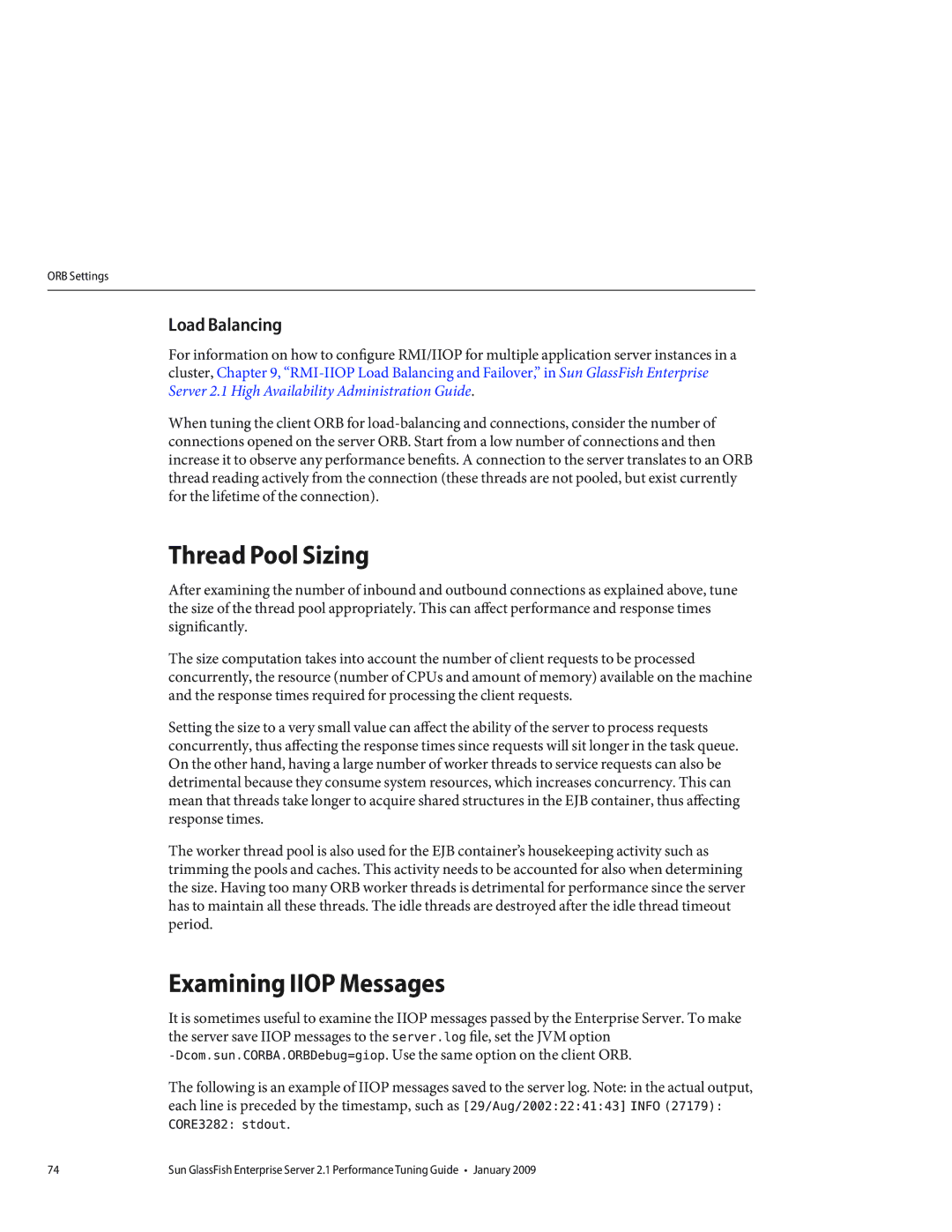ORB Settings
Load Balancing
For information on how to configure RMI/IIOP for multiple application server instances in a cluster, Chapter 9,
When tuning the client ORB for
Thread Pool Sizing
After examining the number of inbound and outbound connections as explained above, tune the size of the thread pool appropriately. This can affect performance and response times significantly.
The size computation takes into account the number of client requests to be processed concurrently, the resource (number of CPUs and amount of memory) available on the machine and the response times required for processing the client requests.
Setting the size to a very small value can affect the ability of the server to process requests concurrently, thus affecting the response times since requests will sit longer in the task queue. On the other hand, having a large number of worker threads to service requests can also be detrimental because they consume system resources, which increases concurrency. This can mean that threads take longer to acquire shared structures in the EJB container, thus affecting response times.
The worker thread pool is also used for the EJB container’s housekeeping activity such as trimming the pools and caches. This activity needs to be accounted for also when determining the size. Having too many ORB worker threads is detrimental for performance since the server has to maintain all these threads. The idle threads are destroyed after the idle thread timeout period.
Examining IIOP Messages
It is sometimes useful to examine the IIOP messages passed by the Enterprise Server. To make the server save IIOP messages to the server.log file, set the JVM option
The following is an example of IIOP messages saved to the server log. Note: in the actual output, each line is preceded by the timestamp, such as [29/Aug/2002:22:41:43] INFO (27179): CORE3282: stdout.
74 | Sun GlassFish Enterprise Server 2.1 Performance Tuning Guide • January 2009 |
